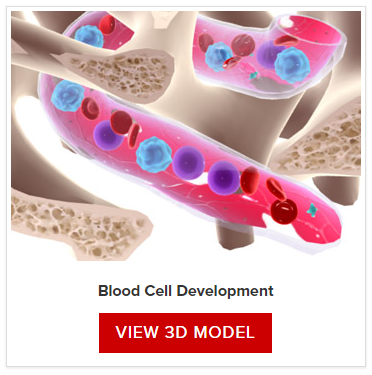Blood cell counts give your doctor important clues about the state of your health before, during and after treatment. Blood counts alone can't determine whether you have a blood cancer, but they can alert your doctor if further testing is needed.
A complete blood count (CBC) is the number and types of cells circulating in your blood. Your CBC is measured using laboratory tests that require a small blood sample.
Blood is composed of several types of cells:
- Red cells, sometimes referred to as erythrocytes, pick up oxygen as blood passes through the lungs and release it to the cells in the body.
- White cells, sometimes referred to as leukocytes, help fight bacteria and viruses.
- Platelets help your blood clot in response to a cut or a wound.
A CBC also tests hemoglobin and hematocrit:
- Hemoglobin is a protein used by red cells to distribute oxygen to other tissues and cells in the body.
- Hematocrit refers to the amount of your blood that's occupied by red cells.
Normal Blood Counts
Normal blood counts fall within a range established by testing healthy men and women of all ages. The cell counts are compared to those of healthy individuals of similar age and sex. Nearly all lab reports include a "normal" range or high and low "values" to help you understand test results.
| Red Cells per microliter (µL) of blood |
White Cells per microliter (µL) of blood |
Platelets per microliter (µL) of blood |
Hematocrit1 % of blood composed of red cells |
Hemoglobin1 grams per deciliter (g/dL) |
|
|---|---|---|---|---|---|
| Men |
4.7 to 6.1 million |
5,000 to 10,000 |
150,000 to 400,000 |
42 to 52 |
14 to 18 |
| Women2 |
4.2 to 5.4 million |
4,500 to 11,000 |
150,000 to 400,000 |
37 to 47 |
12 to 16 |
| Children3 |
4.0 to 5.5 million |
5,000 to 10,000 |
150,000 to 400,000 |
32 to 44 |
9.5 to 15.5 |
1The ratio of hematocrit to hemoglobin is about 3 to 1.
2Normal ranges for women who are pregnant differ from these ranges.
3These ranges are for children from infancy to adolescence; speak with your doctor to find out specific values for infants and young children.
White Cell Differential
Differential count, sometimes referred to as a "diff," is a breakdown of the different types of white cells. A white cell (WBC) differential also checks whether white cells appear normal. The five types of white cells and the approximate percentage they make up in the blood are:
- Neutrophils (55% to 70%)
- Band neutrophils (0% to 3%)
- Lymphocytes (20% to 40%)
- Monocytes (2% to 8%)
- Eosinophils (1% to 4%)
- Basophils (0.5% to 1%)
Until children are more than 4 years old, they have a higher percentage of lymphocytes in their blood than adults do.
How Blood Cancers Affect Blood Counts
Blood cancers can affect blood cell counts in a number of ways, either lowering or increasing measurements. If you're currently receiving cancer treatment such as chemotherapy, drug therapy or radiation, your blood counts will be affected. Blood counts usually return to normal after treatment is complete.
Should You Keep Track of Your Blood Counts?
Some people want to know the results of their blood count tests so they can take preventive measures to protect their health or to what's causing their symptoms. For example:
- If you have anemia as a result of low red cell counts, you'll understand why you have low energy levels or are unable to carry out everyday tasks.
- If you have low white cell counts and develop a fever, you'll know to contact your doctor promptly.
- If your platelet counts are too low, you can bleed or bruise easily, so you may choose to avoid activities that have a risk of injury.
Noncancerous Conditions
About 5 percent of healthy people will have test results outside of the "normal" range. If one or more of your blood cell counts is higher or lower than normal, your doctor will try to find out why. Many noncancerous conditions can contribute to low or high blood cell counts, such as those in the table below.
| Red Cells | White Cells | Platelets | |
|---|---|---|---|
| High counts |
|
|
|
| Low counts |
|
|
|


